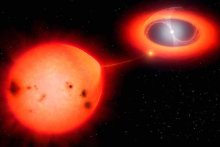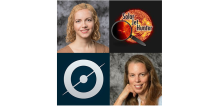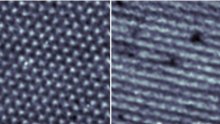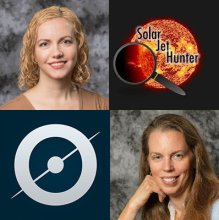News Archive

Woodward research takes a look at the fastest nova on record
Posted
A research report, co-authored by Professor Charles Woodward of the School of Physics and Astronomy describes the unusual quirks of V1674 Hercules, the fastest nova ever on record.

School leads citizen science effort to study Jupiter's atmosphere
Posted
Ramanakumar Sankar, a postdoctoral researcher at the School of Physics and Astronomy is leading the latest Zooniverse project, Jovian Vortex Hunter.

Rusack part of effort that could help improve AI models
Posted
School of Physics and Astronomy Professor Roger Rusack is part of an effort to make data usable across multiple disciplines. It is hoped that doing so will allow scientists outside of Rusack’s area of experimental particle physics to build better algorithms and solve problems using artificial intelligence.

Focus on Nano Microscopy: New Faculty member develops tools to unlock novel physics
Posted
Alex McLeod is a new faculty member in Condensed Matter Experimental Physics at the School. His area of focus is materials, which he studies with nano-scale microscopes.

UMN solar astrophysics research to get a boost from citizen science
Posted
The latest Zooniverse citizen science project called “Solar Jet Hunter” will help benefit a small research team led by members of the School of Physics and Astronomy: former postdoctoral researcher Dr. Sophie Musset, Associate Professor Lindsay Glesener, and Professor Lucy Fortson.

Hanany creates device to improve telescope performance
Posted
Professor Shaul Hanany of the School of Physics and Astronomy is part of a collaboration that has created a new optical device that will improve the performance of telescopes studying the Cosmic Microwave Background (CMB), a relic remnant radiation from the Big Bang. Physicists study the CMB to understand the physics of the Big Bang and the evolution and properties of the Universe. The optical device makes telescopes operating at the wavelengths of the CMB more efficient. Hanany was joined by his former Ph.D. student, Tomotake Matsumura (Ph.D. Physics '06) now a faculty member at the Kavli Institute for the Physics and Mathematics of the Universe, which is part of the University of Tokyo.

Furmanski part of collaboration that casts doubt on the so-called “sterile neutrino”
Posted
Assistant Professor Andrew Furmanski, a faculty member in the School, is a member of a collaboration known as MicroBooNE, 170-ton liquid-argon detector at Fermilab, whose results have possibly eliminated the theorized “sterile neutrino.”

Fernandes part of a collaboration that identified electronic nematicity in a twisted system
Posted
Electronic nematic order is a unique state of matter observed in several quantum materials, including some that display unusual superconductivity -- the ability to conduct electricity without dissipation. Professor Rafael Fernandes of the School of Physics and Astronomy is part of a joint theoretical-experimental research collaboration that found such an electronic nematic phase in a system built by twisting two bilayers of graphene with respect to each other by a small angle.

UMN part of collaboration that confirms Propagation Path of Electromagnetic Waves from Space to Ground
Posted
Space physicists have theorized for over 50 years that a particular type of electromagnetic (EM) waves called EMIC (Electromagnetic Ion Cyclotron) waves propagate from space to the ground, but were unable to confirm the path that they took. Chris Colpitts is a researcher in the School of Physics and Astronomy who is part of an international collaboration that used data from four different sources to create a 3-D model of the propagation path.

UMN solar astrophysics research to get a boost from citizen science
Posted
The latest Zooniverse citizen science project called “Solar Jet Hunter” will help benefit a small research team led by members of the School of Physics and Astronomy: former postdoctoral researcher Dr. Sophie Musset, Associate Professor Lindsay Glesener, and Professor Lucy Fortson.